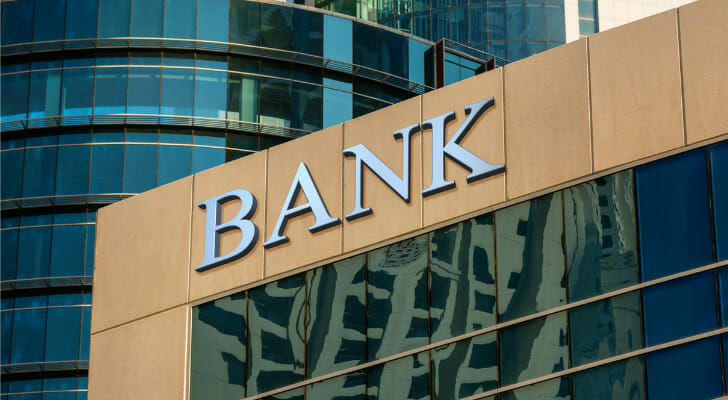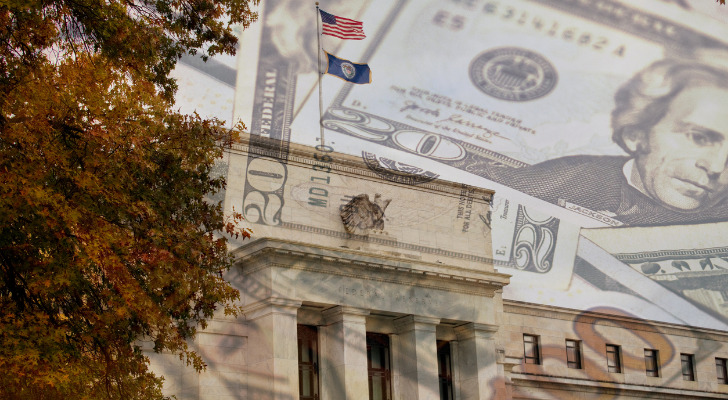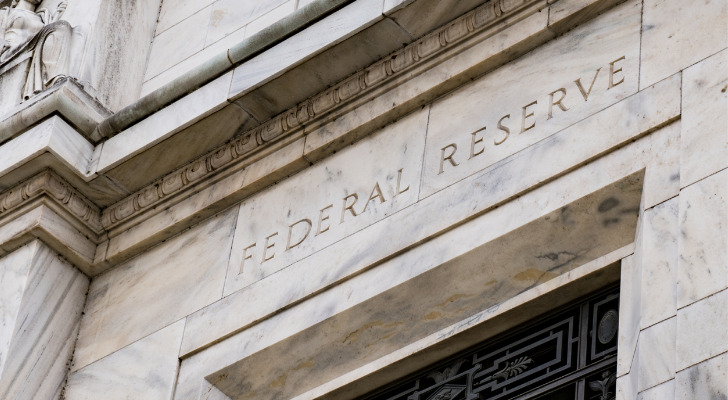The Federal Reserve is the central banking system in the United States. There are 12 Reserve banks that offer services to commercial banks, including lending and distributing currency. The Federal Reserve also pays interest on funds those commercial banks keep on deposit. But why does the Fed pay interest to banks? Controlling monetary policy is a large part of the answer.
For help managing your own money, consider working with a financial advisor.
Reserve Requirements for Banks
The Federal Reserve requires commercial banks, credit unions and savings institutions to keep a certain amount of money in reserve. The reserve is how much money a bank must have on hand at the close of each day. The exact amount is determined by the total dollar amount of the bank’s deposits.
Why does the Federal Reserve require banks to meet reserve requirements? Simply because if banks did not have to keep something in reserve, they could theoretically lend out all of their deposits.
Making loans is one of the core functions of banks and they generate revenue by charging interest and fees on those loans. However, if a bank is lending out all of the deposit funds that could put it at risk if borrowers default on payments.
Banks can meet reserve requirements by keeping cash in an on-premises vault or at a Federal Reserve bank location. If a bank doesn’t have enough funds to meet its reserve requirement, it can borrow the difference from another financial institution. The lending bank can charge interest for the loan.
The interest rate on interbank loans is called the federal funds rate. It’s the rate at which banks lend to one another overnight. The federal funds rate is a tool the Federal Reserve uses to influence monetary policy in the U.S.
Does the Fed Pay Interest to Banks?
Yes, banks earn interest on deposits they maintain with the Federal Reserve. They earn interest on both their minimum required reserve balances, as well as balances in excess of the minimum.
Up until 2008, the Federal Reserve did not pay interest to banks for keeping funds on deposit. However, that changed with the passage of the Emergency Economic Stabilization Act. The Act was passed in response to the subprime mortgage crisis which helped to contribute to instability in the housing market and the subsequent Great Recession.
In order to help bring stability back to the economy following the housing market crisis, the Federal Reserve deemed it necessary to buy up mortgage-backed securities and Treasurys. In order to be able to do that, the Fed had to expand reserve deposits for banks. As a result, the Federal Reserve began paying interest to banks on those deposits.
Why Does the Fed Pay Interest to Banks?
The Federal Reserve pays interest to banks as a means of controlling monetary policy in the U.S. The Federal Reserve Board of Governors sets the rate, which is referred to as the interest rate on reserve balances (IORB). That rate extends to both required and excess reserves. Prior to March 2020, the Fed applied one rate to required reserve balances and another rate to excess balances.
Changes to the IORB can influence changes to the federal funds rate. Again, the federal funds rate is important as it determines what banks pay to borrow from one another overnight in order to meet reserve requirements. The Federal Reserve has a target range that it aims for with the federal funds rate.
Paying interest to banks allows the Fed to direct the federal funds rate in accordance with its monetary policy goals. For instance, the federal funds rate target may be lower when the Fed wants to increase liquidity in the banking system and the larger economy. When the federal funds rate falls, it becomes less expensive for consumers and businesses to borrow money. More loans can mean greater economic growth.
That means the IORB rate falls as well. Conversely, when the Federal Reserve wants to tighten monetary policy, it can do so by instituting interest rate hikes. As the federal funds rate increases, the Fed pays out more in interest to banks by raising the IORB.
What Interest Rate Does the Fed Pay?
The interest rate the Federal Reserve pays to banks is not fixed. The Board of Governors calculates interest as an amount that’s equal to the IORB rate for a given day, multiplied by the balances maintained on that same day.
In terms of how much interest banks earn from the Fed, it depends on the federal funds rate. For example, as of November 2022 the federal funds rate target range was 3.75% to 4.00%. The IORB the Fed paid to banks during that same period was 3.90%.
The Federal Reserve began implementing a series of rate hikes in March 2022. When you compare the IORB and the federal funds rate side by side throughout each rate increase, it’s easy to see how they move in tandem.
Where Does the Fed Get Money to Pay Interest to Banks?
The Federal Reserve was created by Congress, but it’s not funded by Congress. Instead, it’s a completely self-financed entity that operates independently under the federal government umbrella. But how is the Fed able to pay interest to banks if it doesn’t receive any funds from the federal government’s budget?
A central part of what the Federal Reserve does involves acquiring securities through open market operations. Specifically, that means government securities such as bonds and Treasurys. The Fed uses the interest generated from those securities, along with other sources of income, to pay interest to banks on deposits.
In addition to government securities, the Federal Reserve also receives income from:
- Fees charged for services that are provided to commercial banks
- Interest on loans to banks and other depository institutions
- Interest on foreign currency investments that are held within the Federal Reserve banking system
The Fed uses part of its income to pay interest and cover its operating expenses. Any remaining income is forwarded to the U.S. Department of the Treasury. The Treasury uses money received from the Fed and from taxes to fund the government budget.
The Bottom Line
The Federal Reserve plays an important part in managing monetary policy and helping to cool off an overheating economy or stimulate a lagging one. Paying interest to banks for keeping funds on deposit is one way the Fed is able to do that. The upside for consumers is that when the federal funds rate goes up and banks earn a higher IORB, they pay it forward to customers by offering higher rates for deposit accounts.
Checking Account Tips
- Consider talking to a financial advisor about what the Federal Reserve’s interest rate policy might mean for your money. Finding a qualified financial advisor doesn’t have to be hard. SmartAsset’s free tool matches you with up to three vetted financial advisors who serve your area, and you can interview your advisor matches at no cost to decide which one is right for you. If you’re ready to find an advisor who can help you achieve your financial goals, get started now.
- Looking for the best savings account rates? Opening a high-yield savings account at an online bank could help you to earn more interest on balances. Online banks tend to have lower overhead costs so they’re able to offer more competitive rates than traditional banks while charging fewer fees. When comparing online savings accounts, money market accounts, checking accounts or CDs, pay attention to both the rates you could earn and the fees you might pay. Also, remember to check the minimum deposit requirements to see how much you’ll need to open an account.
Photo credit: ©iStock.com/ultramarine5, ©iStock.com/Douglas Rissing, ©iStock.com/pabradyphoto


